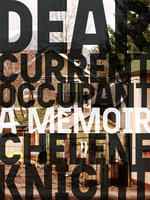We Are the Original SouthernersPosted in Articles, History, Media Archive, Native Americans/First Nation, Social Justice, United States on 2018-05-28 01:09Z by Steven |
We Are the Original Southerners
The New York Times
2018-05-22
Malinda Maynor Lowery, Associate Professor; Director, Center for the Study of the American South (and Lumbee Indian)
University of North Carolina
 An Indian delegation visited the White House Conservatory in 1863 during the Civil War. The story of American Indians during that period is largely overlooked in the contemporary struggle over statues of Confederate soldiers and politicians. Mathew Brady/Buyenlarge, via Getty Images |
CHAPEL HILL, N.C. — The people clamoring over whether to keep or remove Confederate monuments agree on one thing: This is a black-white issue. Last month, a graduate student doused the University of North Carolina’s Confederate monument in a mixture of her own blood and red ink. The monument, she said, “is the genocide of black people.”
I recognize my blood on these statues, too.
When people see Southern history in black and white, where are American Indians? Most people believe that the American Indian genocide took place long ago. But it wasn’t completely successful. There are over six and a half million American Indians, and many of them live in the South. North Carolina is home to the Lumbee Tribe, the largest tribe of American Indians east of the Mississippi (55,000 strong), of which I am a member. We are the original Southerners, and we shaped and continue to shape Southern history.
And yet even the most progressive Americans don’t seem to realize this. The coalition organized to oppose the Unite the Right rally in Charlottesville, Va., last August did not invite any representatives of Virginia’s seven American Indian tribes to participate…
…Indian communities defied the logic of racial segregation; their very existence belied whites’ insistence that there were two races, never to be mixed. In 1924, the Virginia legislature passed the Racial Integrity Act, which outlawed interracial marriage, in part by reclassifying American Indians as “colored.” The act erased the distinct identity that people like Chief Branham are still today trying to protect…
Read the entire article here.






